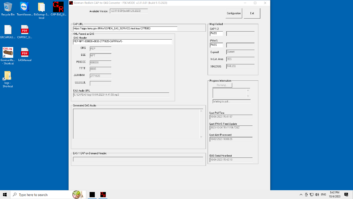
As radio broadcasters prepare for the upcoming national test of the Emergency Alert System later this month, Radio World spoke with manufacturers of EAS equipment to determine what stations should know in advance of the test.
The Federal Emergency Management Agency announced in July that it planned to conduct a national EAS test on Wednesday, Sept. 27 at 2:20 pm. In case of massive inclement weather, the backup test date for the EAS test would be Wednesday, Oct. 4. The test will be conducted in the same matter as the 2016 national test, meaning that FEMA will use the Integrated Public Alert and Warning System. This system allows stations to receive message data from an internet-based Common Alerting Protocol server to measure how effectively multilingual alerts are received as well as boost broadcaster preparedness for relaying emergency messages.
In Part 1 of a three-part series, Radio World connected with Jim Gorman at Gorman-Redlich.
Radio World: What have you learned from previous National Periodic Tests that will prove useful as you prepare for the next test on Sept. 27?
Jim Gorman: During the 2016 test, our properly configured and updated equipment correctly processed the National Periodic Test with no issues, regardless of whether the system received the alert data via IPAWS or over-the-air SAME codes first. We anticipate a similar level of success during the 2017 test, especially given that users have had another year to ensure that their equipment is updated.
Radio World: What types of equipment were put in place during last year’s test?
Gorman: We saw successful message processing from numerous equipment combinations last year, both at our own facilities as well as equipment deployed in the field. This not only includes the combination of our own Common Alerting Protocol equipment (the CAP-DEC1) and Emergency Alert System line (e.g. EAS1, EAS-1 TV/CG) but also our CAP-DEC1 with so-called “legacy” equipment from other manufacturers.
Radio World: What is your sense of the readiness of equipment for the test later this month?
Gorman: We anticipate Gorman-Redlich equipment that was updated in time for successful processing of the 2016 NPT, or updated since the previous test, to also process the upcoming test without issue. I think that most users have already updated their equipment, so we are not seeing as much of an update crunch ahead of this year’s test.
Radio World: What versions should stations have installed?
Gorman: The minimum versions for Gorman-Redlich equipment to process mandatory NPT events and “six-zero” national location codes are v2.36 b9.15.2016 for the CAP-DEC1, v9.8 for EAS1 encoder/decoder units, and v20.9 for EAS1 TV/CG encoder/decoder units with integrated character generator functionality. The latest versions that are shipping from the factory are v2.37 b5.10.2017 for CAP-DEC1, v9.9.1 for EAS1, and v20.9.5 for EAS1 TV/CG units.
Radio World: What guidance do you have for customers who still need to update their equipment or ask questions?
Gorman: Gorman-Redlich customers wishing to update their units or receive instructions for configuring their equipment may contact us via our website.











